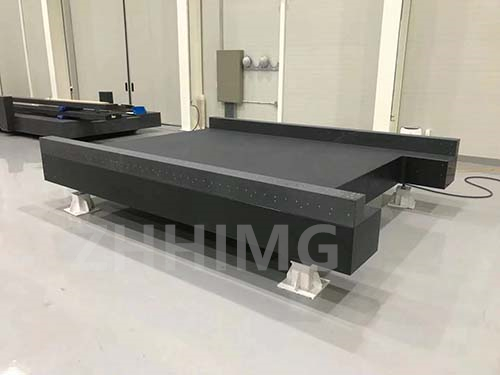Granite is a popular material used in the semiconductor industry, particularly when it comes to manufacturing sensitive equipment used in the production of semiconductor chips. Granite is known for its outstanding characteristics such as high stability, rigidity, and low thermal expansion coefficient. However, it also requires special surface treatment for it to be suitable for use in the fabrication of semiconductor equipment.
The process of surface treatment for granite involves polishing and coating. First, the granite base undergoes a polishing process to ensure it is smooth and free of any rough or porous areas. This process helps to prevent particle generation, which could potentially contaminate sensitive computer chips. Once the granite is polished, it is coated with a material that is resistant to chemicals and corrosion.
The coating process is crucial for ensuring that contaminants are not transferred from the granite surface to the chips being produced. This process involves spraying a protective layer of material over the polished surface of the granite. The coating provides a barrier between the surface of the granite and any chemicals or other contaminants that may come in contact with it.
Another critical aspect of granite surface treatment is regular maintenance. The granite base needs to be cleaned regularly to prevent the accumulation of dust, dirt, or other contaminants. If left uncleaned, the contaminants may scratch the surface, or worse, end up on the semiconductor equipment, affecting its performance.
In summary, granite is an essential material in the semiconductor industry, especially in the fabrication of semiconductor equipment. However, it requires special surface treatment, which involves polishing and coating, and regular maintenance to prevent contamination. When treated properly, granite provides an ideal base for the production of high-quality semiconductor chips that are free from contamination or defects.
Post time: Mar-25-2024

